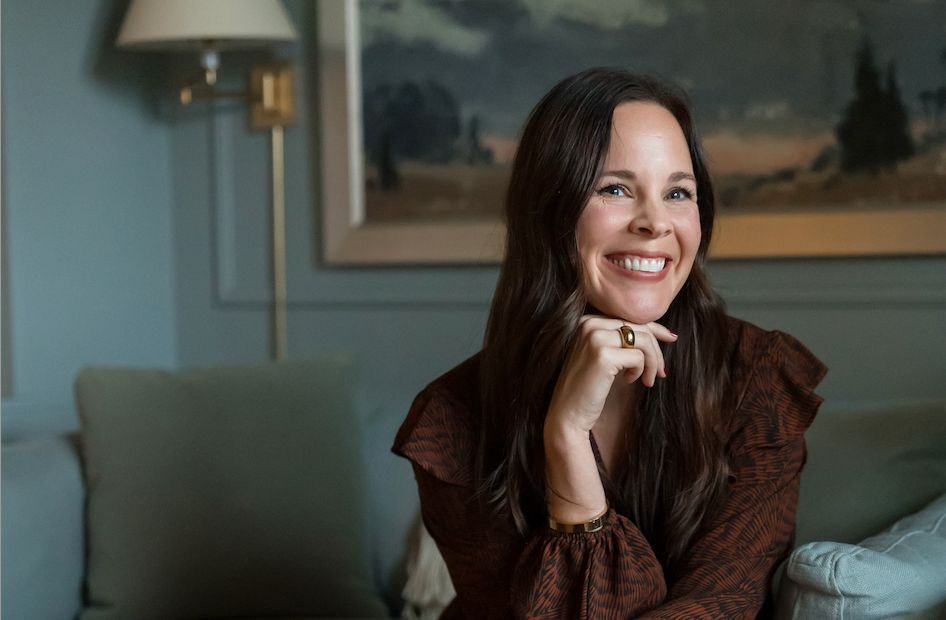The 50 States Project is a series of candid conversations with interior designers across the country about how they’ve built their businesses. This week, Jackson, Mississippi–based designer Melanie Bryant tells us her secret to setting an hourly rate, how hiring interns was a game changer for her firm, and the surprising way design photography boosted her business.
What pushed you to launch your own business?
A friend of mine from high school recently forwarded me a video from when I was 17 where I was asked: “Where will you be in 20 years?” and I said, “I’m going to have an interior design business.” I went to school knowing that’s what I wanted to do, and that was my major the first year. But my program was completely focused on commercial work, and I realized very quickly that, no, I did not want to pick out carpet tiles for a dental office or arrange 100 cubicles.
I talked to my mom about it, and she said, “You know, if you’re going to stay in Mississippi, I just don’t think there’s a big market for interior design here—this is for people who live in bigger cities and markets with more money.” If I was going to stay here, she encouraged me to do marketing and PR. So I switched my major, went through school, worked in PR and marketing for several years, and then shifted into sales. My last sales job was working for Kalalou, a home decor and accessories manufacturer based in Jackson. They would send all of us to Atlanta Market and High Point Market, and I was so envious of the designers who would come in. I would be holding the scanner, and they would say, “Oh, the Joneses would love this mirror for their entryway.” I remember thinking, “I would love this job.”
How did you ultimately get there?
In my personal life, my husband and I had started flipping houses when we were in our early 20s, and then built our first home a few years before I started working at Kalalou. That was the first time I had designed my own space as an adult with money, and I loved it. Friends started to ask, “Hey, would you help me pull some things together here?” When I was having my second child, I felt this really strong pull to leave work. I worked my last market nine months pregnant, had my second baby, and then quit my job. But about two months into maternity leave, I started thinking, “There’s no way I cannot work. This is not for me.”
At the time, there was this really chic design shop in our small town—it was run by a designer who lived in New Orleans and Jackson, and half the time nobody was there because it was only open when she was in town. I was strolling my daughter downtown and had this overwhelming urge to knock on her window and say, “Hey, can I please work here?” So I did, and she happened to be there. I looked like hell and had my newborn child with me, but I said, “Hey, you don’t know me, but I love your store. I would love to work for you one day a week.” And she said, “You know what? That’s so strange, because that’s exactly what I’m looking for.”
That’s a great deal for both of you.
Totally. I relished that job. It was my escape, my getaway. The designer and I became friends, and she eventually invited me to go to High Point with her. I had worked it with Kalalou, but I had never gone with a designer. Once I was there on the other side, as a buyer, the internal desire to do this was so strong that I made the decision: Come hell or high water, this is my goal.
In 2013, after I had been working for her a little over a year, she was kind enough to give me a client lead that she had absolutely no interest in—I didn’t understand that at the time; now I do. She said, “Hey, this lady just needs decorating, and I totally think you can handle it.” So I got my resale certificate and that was my first client.
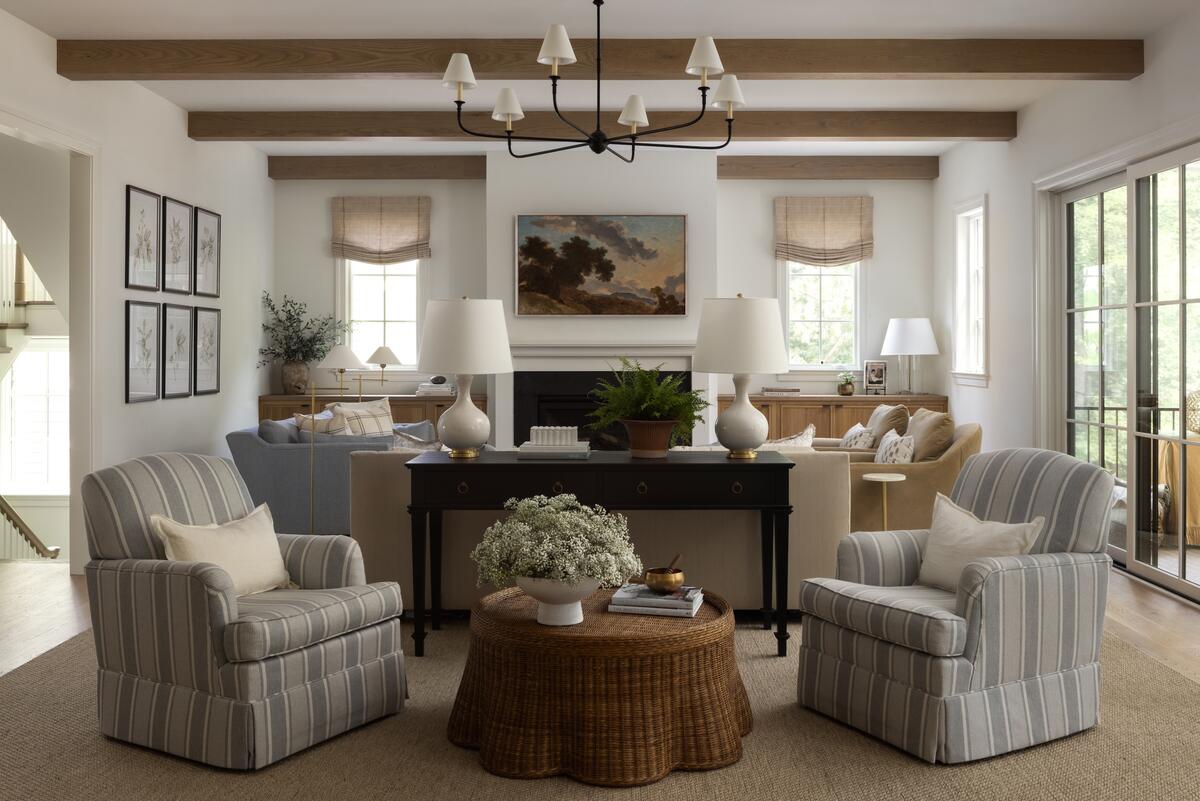
How did that first job go?
The project was not at all my taste. She wanted a mirrored backsplash in her kitchen and liked bright, bold reds and leopard print—which all has a place, but not with what I like. But all I wanted to do was please her. It wasn’t about my aesthetic; I just was so excited to be helping someone. And it went really well. She was very happy at the end of it, and that was the feeling that I wanted to keep repeating.
How did you turn that first success into a business?
The hardest part for me getting started was figuring out how much to charge. I was not technically trained, and I didn’t have any real experience. I started Googling and read something that has forever stuck with me: You should charge what you feel your time is worth. Don’t look at what other designers charge; you just need to figure out what you think you are worth. And at the time, honestly, I felt like I was worth about $35 an hour.
I had clients who couldn’t pay [my rate] now, but they could then. That’s the beauty of it: Not everybody can afford to hire the best designer, but that doesn’t mean they’re not deserving of a peaceful and lovely home. So my firm’s rate has gone up, but now there are other people who are in that [early-career] place, and maybe they charge $50 an hour.
And honestly, that’s how I got clients: I didn’t charge a lot. I was a good value. And when people started flocking, I increased my rate a little bit and slowly refined my client base. And I’ve been doing that ever since.
How do you know when it’s time to raise your rate?
When there are so many requests that I cannot get to them all and do a good job. Sometimes you can see a pattern in the influx of inquiries—I mean, right now, we are booked out through March of next year, so if anybody calls me, I have to say no. That probably means it’s time for me to raise my rate again.
When you started hiring, how did that change the way you thought about charging?
I’ve never increased my rate when I made a hire. I feel like if you hire smart, you make money when you hire. For instance, when I hired my first employee, I brought someone in for a general assistant job—someone to take the load off. It was a lot of, “Run this to the upholsterer.” But if you hire at $15 or $25 an hour and you can charge for the things they are doing, then they pay for themselves and make you money.
Now, at some point—when you’re running a mega business and you have a marketing person who has no billable hours—that’s a totally different conversation. But for me, there are four people in my firm, and everyone makes me money.
Do you bill the same hourly rate for every employee, or are there tiers of fees?
In my agreement, I outline what is billable. Those are very specific tasks, and it doesn’t matter who’s doing the work—this is what my firm bills hourly. I tell my clients that if it’s getting done and I’m overseeing it, this is what we’re going to bill for it.
And then you’re also charging a percentage on product?
Yes. My promise to my client is that I am going to extend some type of discount to them that is relative to the discount I get with my vendor. If I’m getting 50 percent off retail from my vendor, I may give my client 15 percent off. Now, is that the smartest way? No. Could I make a lot more money? Yes. Do I need to? No. I’m content, and I love to offer that value to my clients.
That said, it’s not a standard markup. My trade discount is anywhere from 10 to 70 percent off, depending on where I order; I can’t have the same markup and the same discount when I don’t have the same relationship or trade benefits with everybody. Sometimes I order items from a place where I may not get a discount in order to fit the client’s budget, and I want to have integrity with the items I recommend, but [I’m still going through] the admin rigmarole to place the order and invoice. If I think the best item was at the flea market, but I didn’t get a discount there, it’s in my agreement that I will mark up those items, and my clients know that.
But sometimes I’ll order stuff from Target—I am not ashamed or above ordering something from a retail store! If I can get a basket [from a consumer retailer] that fits the bill for a quarter of the price of a [trade] vendor, then I’m going to order the item from Target. But a retailer like Target does not offer me a discount, so the client is going to be charged differently for that than when I order $20,000 worth of lights from Visual Comfort.

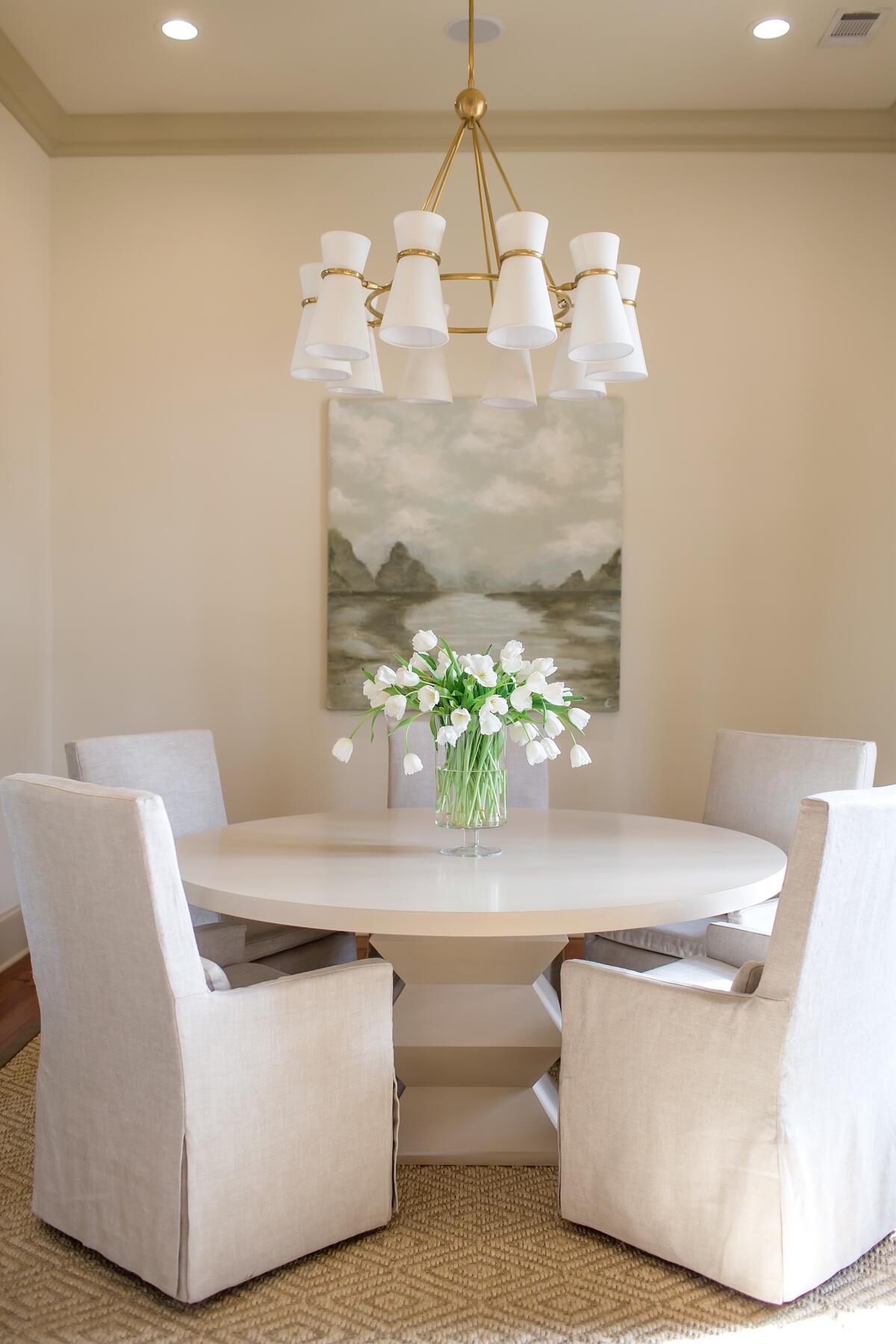
When did you start hiring, and what roles do you have supporting you now?
I started hiring about five years into my business. First it was that general assistant, and then I paid for a drafter, which was clutch. I could communicate what I needed done and charge my rate for it—which at the time wasn’t that much higher than what I was paying—but it still took a load off me, and I was still making a little bit.
Then I discovered interns, which was a game changer. I live in a college town, and I pay my interns $12 or $15 an hour—which is the going rate here in Mississippi—instead of the $20 to $65 an hour [I had paid for more experienced employees to do that work].
I was selling a lot, so three years ago I brought someone in to manage procurement next. I actually hired a friend of mine part-time, and it’s worked out great. Now, once I put the items in Studio Designer, she completely takes over—I don’t even have to look at it—which has been a key part of my growth.
That allows you to take on more design work.
Yes! And at a certain point, I had so much design work that I realized I needed a design assistant, [a role that was initially filled four days a week by] an intern who was incredible. Now she’s a full-time salaried designer.
What did she take off your plate in that role?
When she started, it was everything technical—things like paint schedules or where to put the valves on the wall-mount faucet. If the trim carpenter needed specs on all the sinks, she’d send that off. She would occasionally pop in, and I’d be like, “Help me pick a rug,” or “Help me find lamps,” and she slowly started to do more design work. Now she’s starting to get her own projects—I still oversee them, but she’s worked her way into that.
It’s funny: She gets to wear a lot of hats that I wear as an entrepreneur because I need the help. She’s willing to help, but she has told me many times: “Now that I’ve worked for you, I don’t know that I want to do this on my own.” The ratio of design to admin when you’re running a firm is so far off what they teach in college.
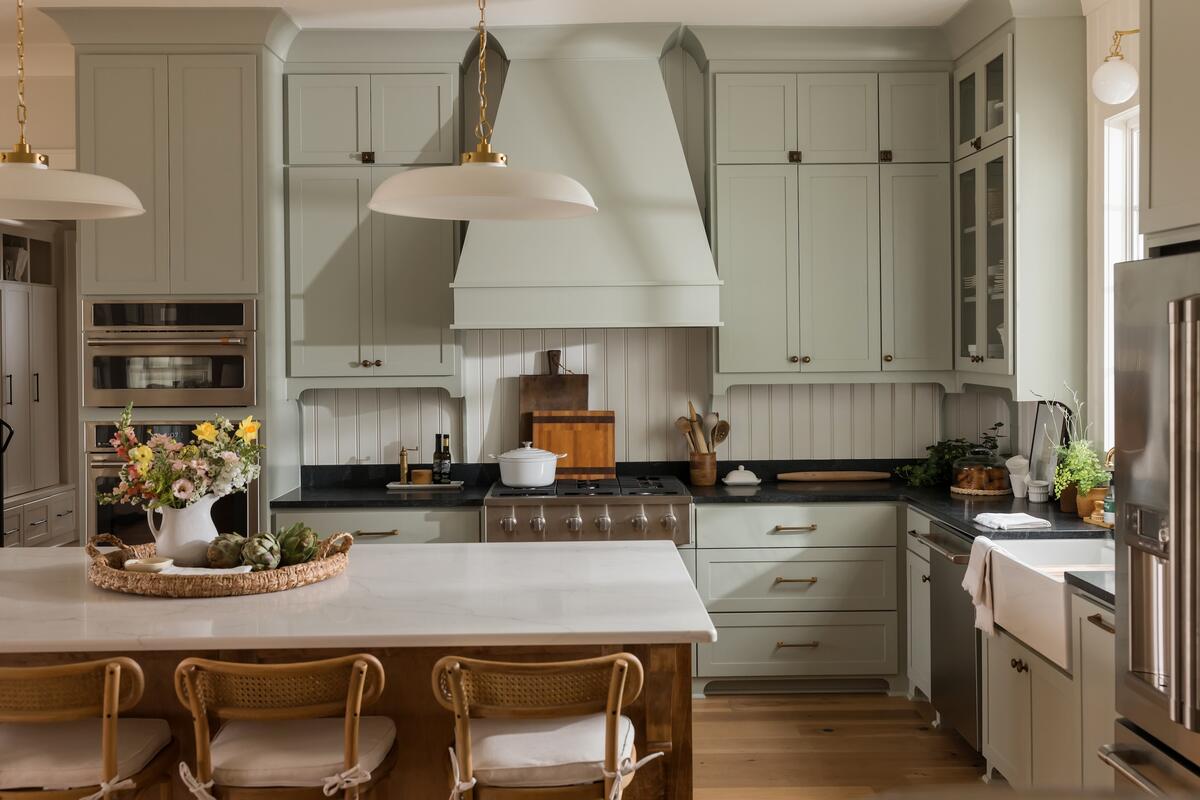
How many projects are you typically working on at a time?
Right now, a full plate is four to six full-scope new construction projects. I have a minimum hourly fee that I require; I also have to be able to design at least four rooms from concept to completion, as well as the exterior, and I have to be able to take photos. If you want me to help you, I have to have that. We also carve out a portion of their budget for general consulting, which is for wherever they need me. If they get bogged down on windows, we’ll help with the windows. Another client may order their windows in two seconds, but they get bogged down on their upstairs bathroom and want to pull me in there.
We also have a relationship with a builder who does high-end spec homes—$800,000 and above—and we’re currently doing six of those. Then I supplement with smaller renovating or decor projects, usually about two of those each month. I also do consulting, but I limit it to four [consultations] per month. That’s for anybody: It’s one hour, and I do that because I think everybody should have access.
That’s more than I want to do, though, and I’m aiming to scale down. I’m so swamped right now. I’m aiming to drop the new construction to no more than two at a time and focus on bigger projects.
You mentioned that part of that agreement for the new construction is the permission to take pictures. What role has documenting your work played in the growth of your firm?
It is so essential. Once I started having professional photos taken, I felt like my work came alive. It just completely transformed the way that I viewed my own work. It was a confidence booster to look at it and think, “I could see this in a magazine.”
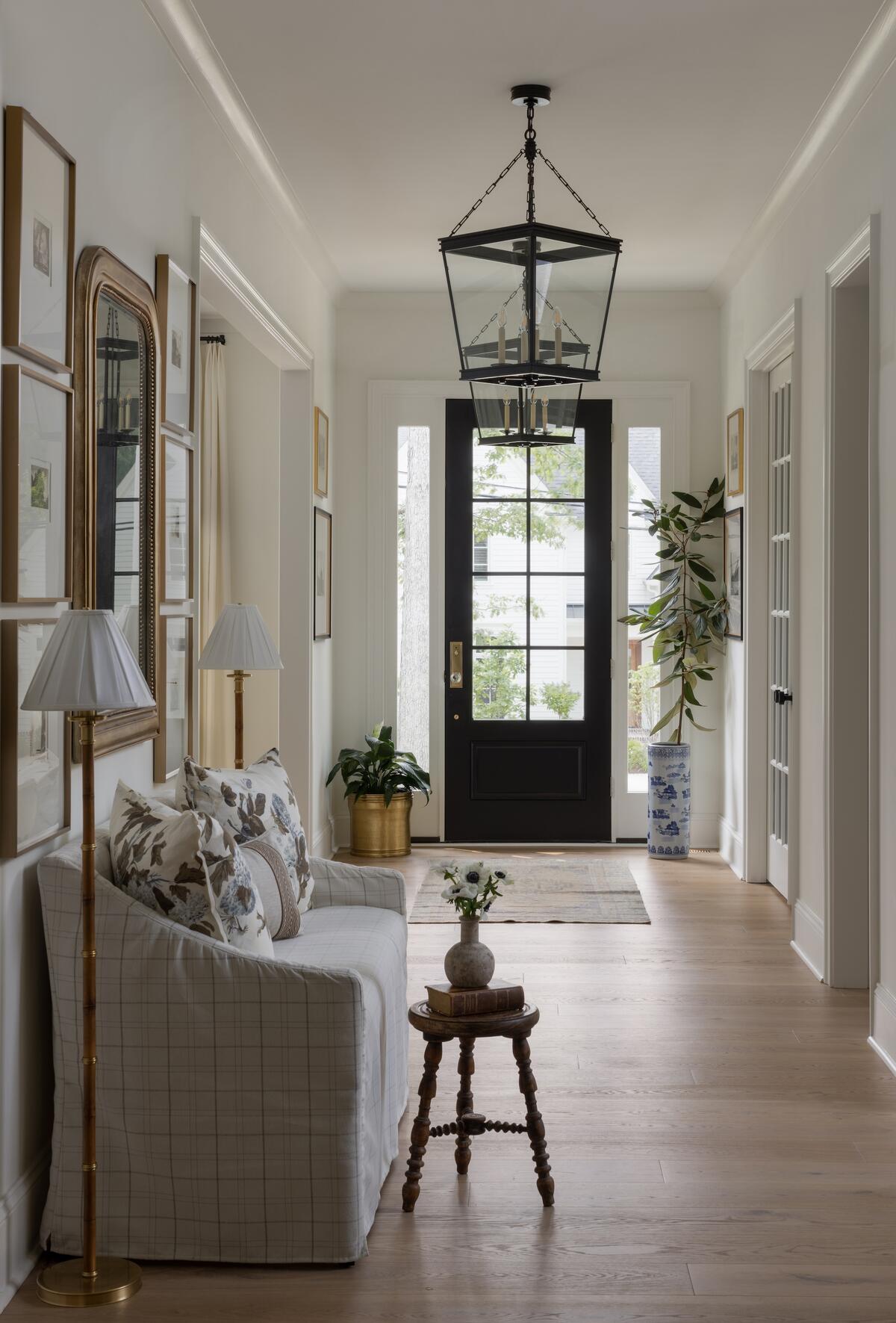

I want to talk a little bit about the design scene in Jackson. How does where you are impact the opportunities coming your way?
There’s a lot of “monkey see, monkey do” where we live. Our market is not exposed to the world of design the way a bigger market might be. In the whole state of Mississippi, we don’t even have a Pottery Barn, much less an amazing design store. We are the poorest state in the nation. That’s not to say there is no money here—it’s just harder to find, so the market doesn’t warrant having a lot of great places to shop.
For a long time, the look here has been lots of white and gold, with a dark antique, abstract art, and some blues or greens. I am different because I like a lot of warmth in my design, whereas Jackson likes a lot of white upholstery. The design that our market likes is not as comfortable, you know? You walk in and it doesn’t feel as approachable. That is the exact opposite of what I try to design. I like a down-to-earth, comforting space.
Do clients just not know how to ask for that until you show them?
I guess so. I’ve seen more and more people locally want my help. And it’s not that Mississippi is not open to change; there’s just a lack of awareness that you can do something different.
How does the lack of local resources impact the way you source for projects?
That is the most frustrating part of my job. It amazes me when I go to Dallas or Atlanta and designers have the fabric showrooms at their fingertips, or all these amazing higher-end plumbing showrooms that they can take their clients to.
The role that I play in sales is huge, because I have to travel to see these things. I may only get to travel a few times a year to build my internal inventory of items I want to use, and then the job is to come back and to sell these items to my client. We order a ton of samples, and that helps, but there’s just so much that I can’t see or touch. There’s a lot less flexibility and freedom.
I’ll tell you what helps: seeing what brands other designers are using. If I know this designer is good and reputable, and they’re sourcing from this line, this line must be worth ordering from even if I can’t go see it.

As I’ve been doing interviews for this series for the past five years, I’ve noticed that a disproportionate number of Mississippi designers have a retail store as well. Is that their answer to lack of access? And what made you decide not to go that route?
I do think it goes back to tangibility. If a client can’t see it and touch it, it’s really hard for them to want to buy it. If you have a retail store where you can showcase your aesthetic, you’re naturally going to sell more.
The fascinating thing is, I think that’s become a substitute for photography for some designers. We have some great designers here, and they have these amazing retail shops, but I’ve noticed they aren’t always investing in their portfolio. That’s the number-one reason I don’t have a store: I don’t want shoppers distracting me from my job, or a full-on design project turning into sourcing a sofa, a couple chairs and sprucing.
But another reason I do not want a store, and will never have one, is because I’ve heard people say: “We’ve had these lamps on the floor for six months—we need to move them. Let’s put them in Sally’s home.” And that, to me, reflects a lack of integrity in design. I don’t ever want to feel like I have to push an item because I’ve already paid for it and we need to get rid of it. I also never want to be stifled into using certain brands or designing at a certain price point. I want a full range. The fact that there are no limitations on where I’ll source is a selling point to my client.
Are you going to markets often? And what shows or design centers or markets are most essential for you?
I used to go to the markets in Dallas, Atlanta and High Point, but I would only go to High Point once every three years because it’s just not economical from where I am. Now I go to High Point once a year, and that is enough to get me through. And then occasionally I’ll go retail shopping in Dallas—I’m make stops at RH, Serena & Lily and Pottery Barn so that I can tell my client I saw it and sat in it if I need to spec those brands. The reality is the client can’t sit on it, so it’s my job to know if a piece is a good value. And that requires legwork.
What’s the biggest change you made that put you on the path to success?
Hiring people and photography have been instrumental, but so has streamlining. Having a process—sticking to that and communicating that process to clients—has been huge for our efficiency. I have defined everyone’s roles. I think that is super important in this career, because it’s easy, especially if you’re a creative, to be all over the place. Having a process really grounds me.
What does success mean to you today?
To me, success is not about being famous or getting a licensing deal. It’s not even about making a ton of money, although I think I do pretty good. Success is loving what I do, being fortunate enough to make money doing it, and still having time to spend with my family.
To learn more about Melanie Bryant, visit her website or find her on Instagram.
















